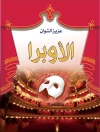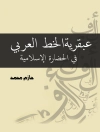New interpretations of an art form ubiquitious in the Middle Ages.
English alabasters played a seminal role in the artistic development of late medieval and early modern Europe. Carvings made of this lustrous white stone were sold throughout England and abroad, and as a result many survived the iconoclasm that destroyed so much else from this period. They are a unique and valuable witness to the material culture of the Middle Ages.
This volume incorporates a variety of new approaches to these artefacts, employing methodologies drawn from a number of different disciplines. Its chapters explore a range of key points connected to alabasters: their origins, their general history and their social, cultural, intellectual and devotional contexts.
ZULEIKA MURAT is a Research Fellow and Lecturer in the History of Medieval Art at the University of Padua.
Contributors: Jennifer Alexander, Jon Bayliss, Claire Blakey, Stephanie De Roemer, Rachel King, Andrew Kirkman, Aleksandra Lipinska, Zuleika Murat, Luca Palozzi, Sophie Phillips, Nigel Ramsay, Christina Welch, Philip Weller, Kim Woods, Michaela Zöschg
Innehållsförteckning
Introduction – Zuleika Murat
’Burton-upon-Trent, not Nottingham.’ The evolving study of medieval English alabaster sculpture – Nigel Ramsay
Stone to ensure victory and to generate friendships. On the meaning of alabaster – Aleksandra Lipinska
Contextualizing English Alabasters in the Material Culture of the Medieval Mediterranean – Luca Palozzi
English Alabaster Images as Recipients of Music in the Long Fifteenth Century: English Sacred Traditions in a European Perspective – Andrew Kirkman
Contextualizing alabasters in their immersive environment. The ’ancona d’allabastro di diverse figure’ of the Novalesa abbey: meaning and function – Zuleika Murat
Alabaster Carvings in Late-Medieval Lincolnshire – Jennifer S. Alexander
’Tabernacles, howsynges and other things’. Three Alabasters from the Burrell Collection in Context – Claire Blakey
’Tabernacles, howsynges and other things’. Three Alabasters from the Burrell Collection in Context – Rachel King
’Tabernacles, howsynges and other things’. Three Alabasters from the Burrell Collection in Context – Michaela Zöschg
Conservation study of three ’caput’ alabaster carvings from the Burrell Collection, Glasgow Museums – Sophie Phillips
Conservation study of three ’caput’ alabaster carvings from the Burrell Collection, Glasgow Museums – Stephanie De Roemer
’Smooth as Monumental Alabaster’. The Alabaster Tomb Industry in England 1550 – 1660 – Jon Bayliss
Merchants’ tombs in alabaster – Kim Woods
Exploring Alice: the theological, socio-historical, and anatomical context of the de la Pole cadaver sculpture – Christina Welch
Bibliography
Index












